Chapter 4
Section 4.0
Section 4.1
Section 4.2
Section 4.3
Terminal Imaginaries, was produced in the spring 2021, funded in part by a Humanities, Arts, Science, and Technology Alliance and Callaboratory (HASTAC) scholarship and through funding from Indiana University’s College Arts and Humanities Institute (CAHI). A video installation for three projectors, it was developed when I was still winnowing my dissertation project. In the period shortly after creating the piece and the videos associated with it, I would go to successfully defend a prospectus for this dissertation, which at the time was titled “Ontologies of Undoing” which addressed more broadly broadly the ways that human remains produced value for medical institutions. The problems with that prospectus, and the Terminal Imaginaries installation, were similar: I was still being too vague in my approach, and I had not cobbled together a completely forthright understanding of the history of medicine. This installation project helped me spend more time with a small collection of images, and it afforded me time to think through the creative, aesthetic modes of how those images operated. This work would form the spine of a successive installation, Tuberculous Imaginaries (4.2.4; 4.2.5), and the basis of my visual culture critique discussed earlier in this dissertation (1.1.2;2.x.x).
Terminal Imaginaries was never shown to the public, but instead was developed and displayed in the garage of condo where my wife’s (then girlfriend) and I lived (fig. 1). I built the installation during the Covid-19 lockdown, before either my wife or I got our first vaccines, and so it was never shown because of the limitations of that period. I displayed it virtually as part of the Media School’s annual graduate conference Common Ground in spring 2021.1
The work was made from three projectors and three corresponding mini-computers, which ran the video feeds as a looping .mov file through the open source VLC media player. In addition to these video feeds, the projectors were mounted on tables with black paper flags and a circular mirror hanging in front of the light beams (fig. 2). While never displayed, I had hoped the waist high projectors would make an audience self conscious of their space in the room, of their bodies, and to subtly steer them around the space.2 Each of the three projectors displayed a different set of images (fig. 3). In the installation’s corresponding website, I wrote,
Each projector has a different kind or genre of image. Projector A uses materials sourced from dermatology textbooks; Projector B’s images were pulled from different anatomical atlases (most notably Dr. Henry Gray and Warren H. Lewis’ Anatomy of the Human Body, also known as Gray’s Anatomy); Projector C features images of anatomical classes posing in front of their anatomized subject. Together, these projectors present a meditation on modern medicine’s visual culture.3
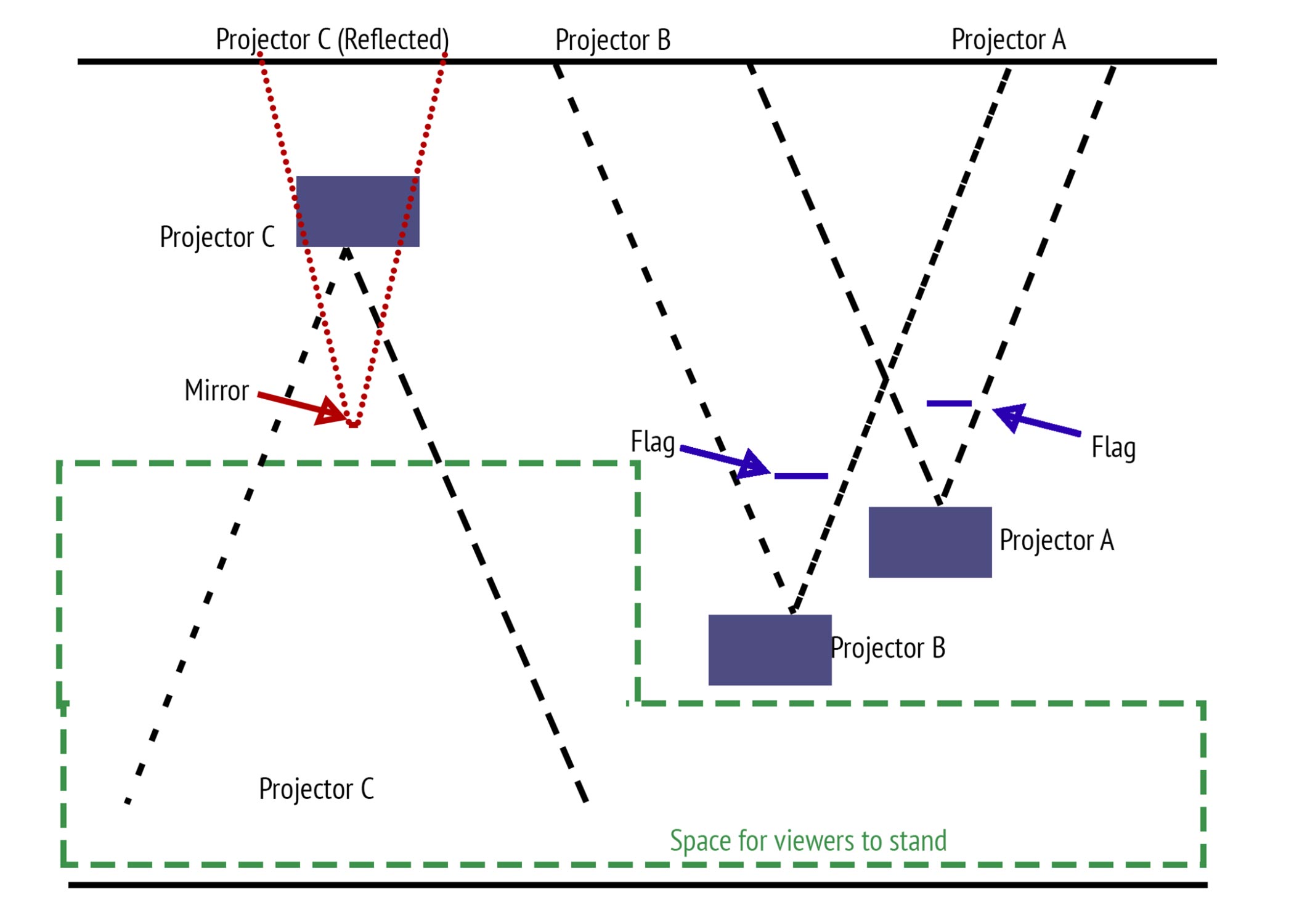


Figure 2. A diagram of the projector setup for the Terminal Imaginaries installation.
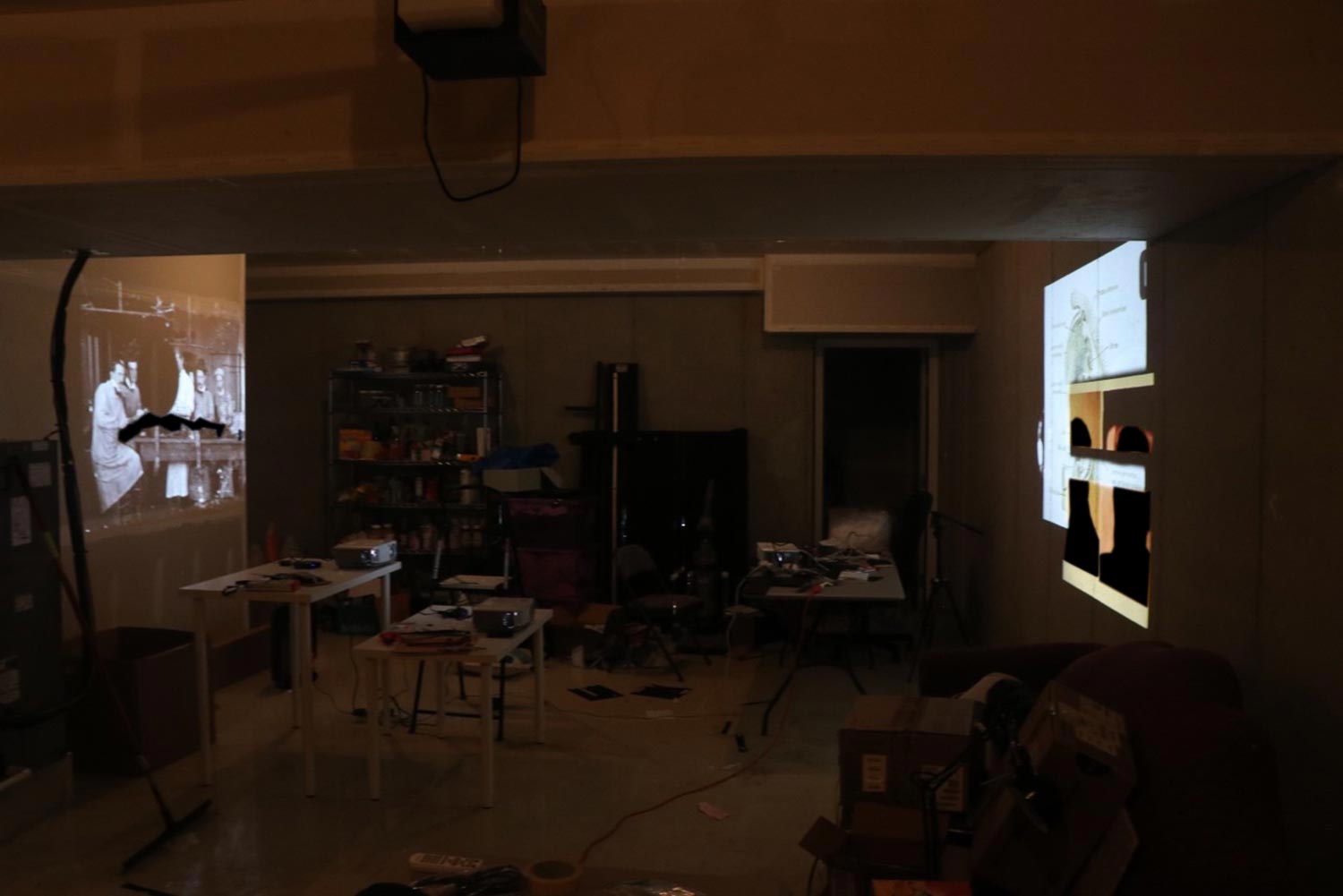

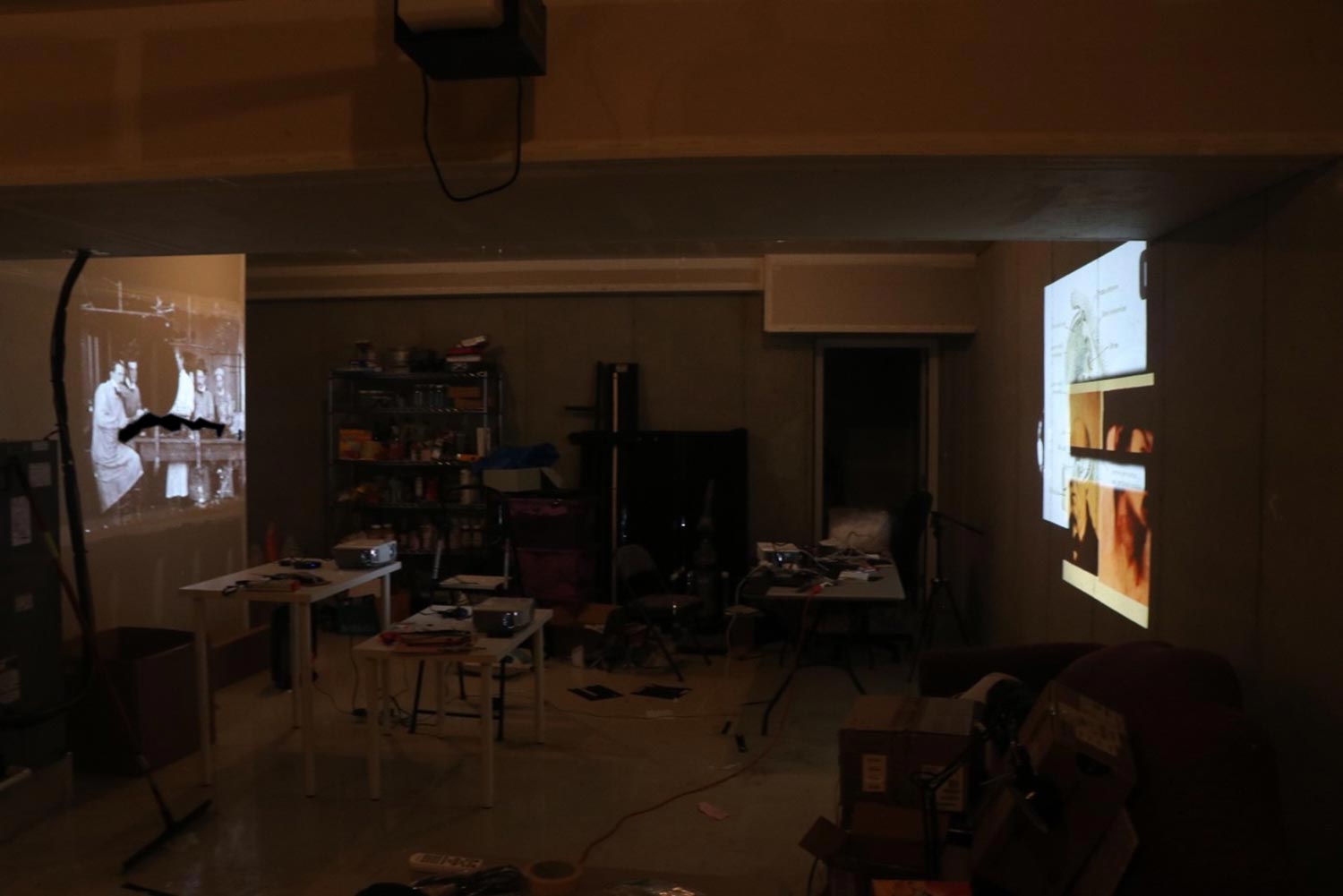
Figure 1. The setup for the install as it was presented in spring 2021.
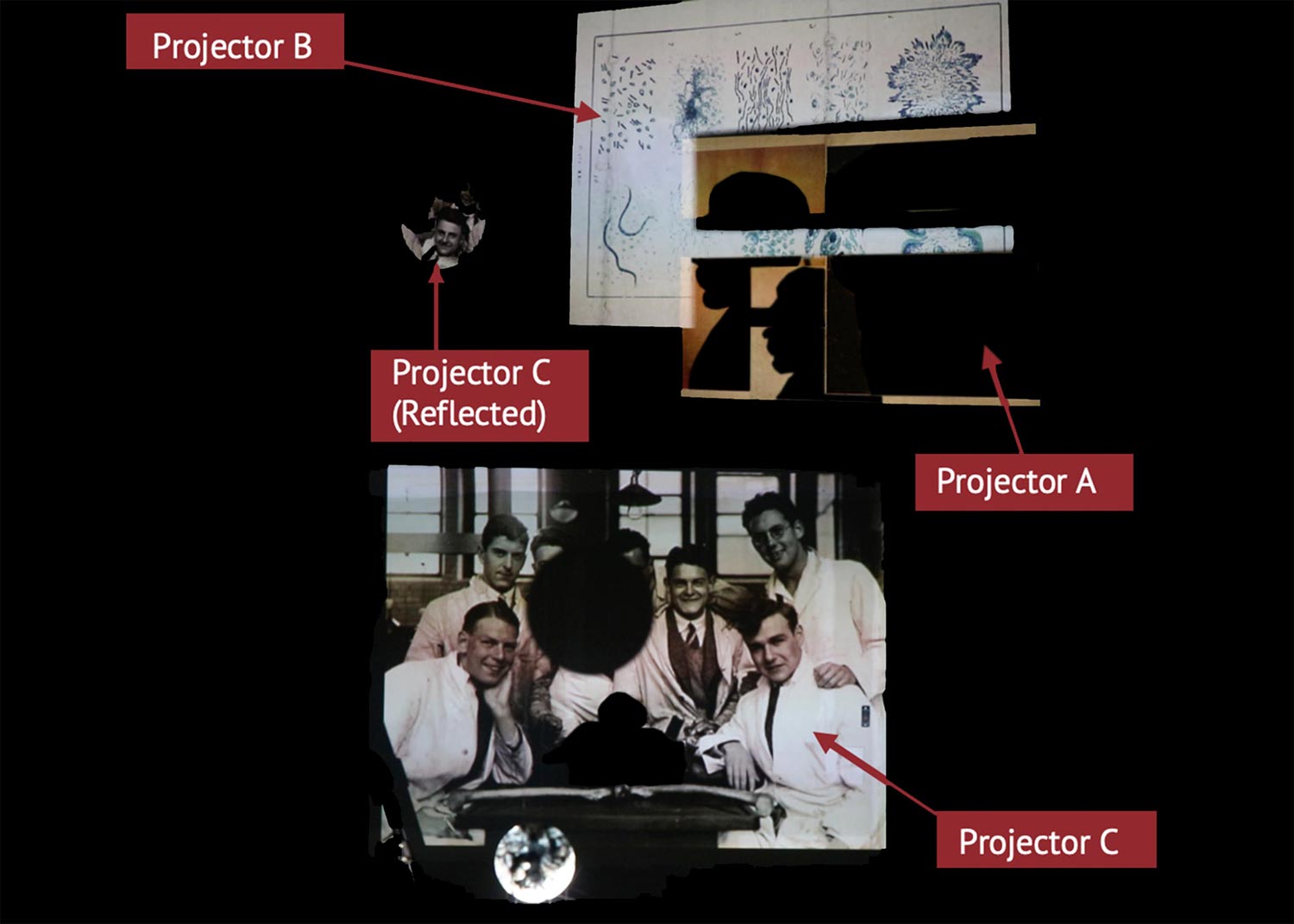
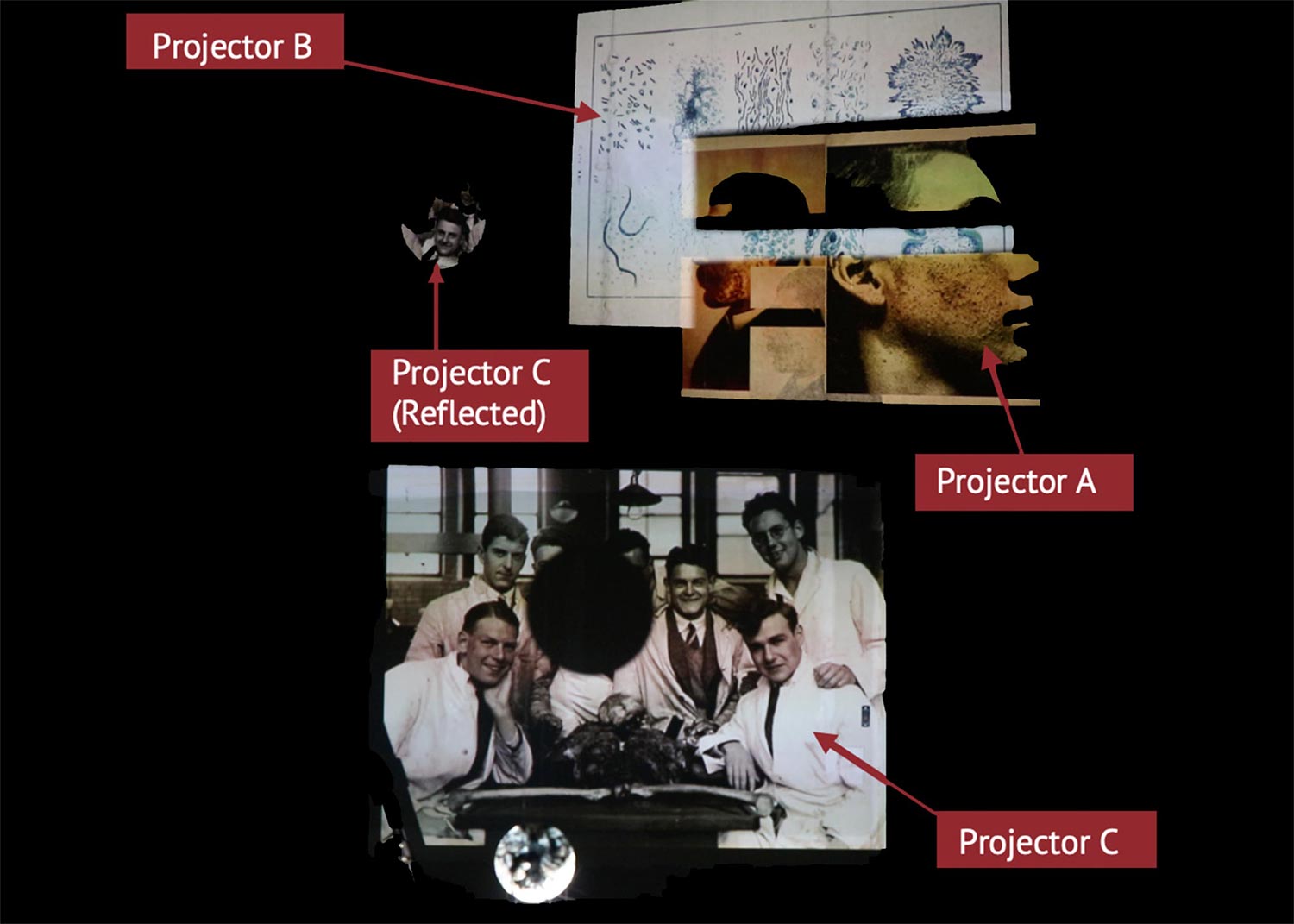
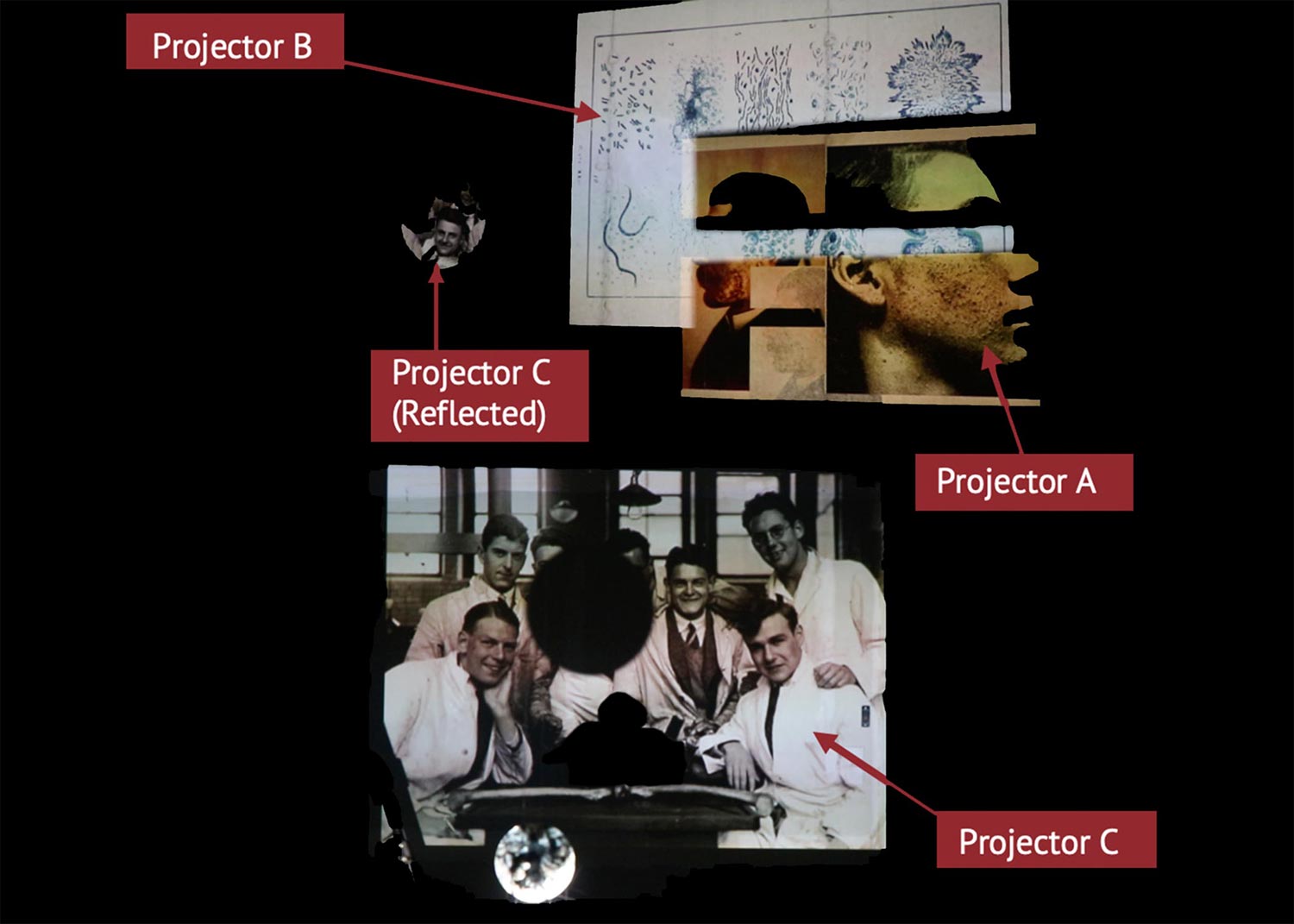
Figure 3. A mockup of the terminal imaginaries installation with each image showing (although they are not meant to be shown on a single wall).
-
Common ground citation. ↩
-
If I am honest, however, my skill with spatial installs needs more practice and consideration. It is a limitation of this project and the Tuberculous Imaginaries project discussed later in this chapter (4.3.1) ↩
-
Sean Purcell. “Welcome to Terminal Imaginaries”. Post Made Around 2021. ↩
